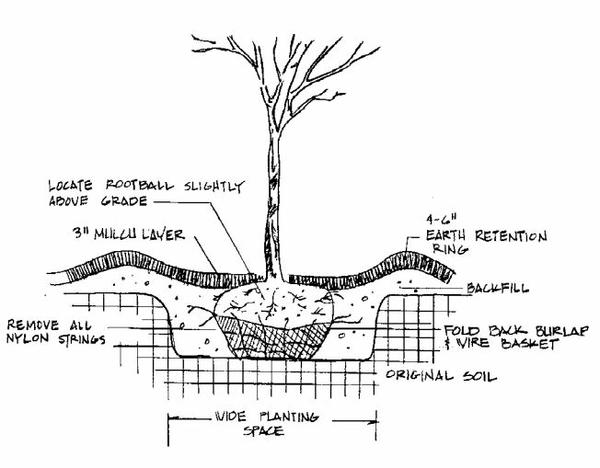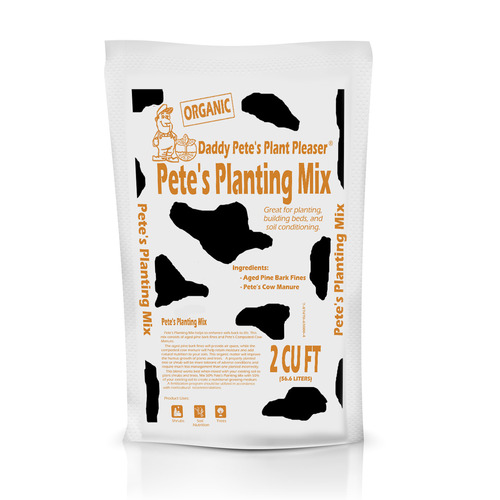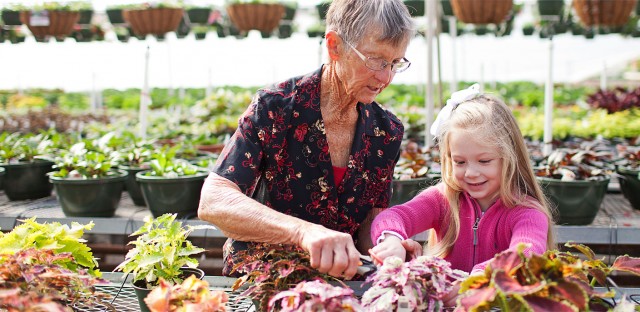Green Side Up
Plant installation! It sounds like a topic that is loaded with fun and excitement. It can actually be quite an interesting subject, and correct installation is imperative for plant growth and health. Improper planting can cause a multitude of problems for new plants in the landscape. I see plants that are planted too deep, too shallow, in holes that are too small or improperly amended, and other issues. Gardeners can head off short and long term issues with their plants by starting them off correctly.

There is a lot more to planting than digging a hole, dropping plants in the ground, and covering them back up. The word “hole” is somewhat misleading to begin with.
I like to tell gardeners to think of an “area” instead of a hole. Lateral space is just as important, if not more important than depth. A hole that is too deep will only cause problems for most plants.
How wide is wide enough, and why? I like to recommend two and a half to three times the width of the root ball and no deeper than the root ball is in height. Ninety percent of most tree and shrub root systems will be located in the top eighteen inches of soil. Giving plants a head start on lateral root growth from the beginning will help jump start plant establishment. One other tip to invigorate a new root system is to break up the root ball when planting. Trees and shrubs that are grown in containers can develop heavy root systems that circle the pot. If planted directly in the ground from the pot, these plants are at risk of girdling themselves with their own roots. If plants are severely root bound from the start, you do not have to be shy. Giving a root system a good “bashing” will loosen the root ball and promote new root growth.
If you have heavy clay soil, ditch the shovel and grab a pick. The soil in my landscape is basically brick. I never use a shovel for planting. It is nearly impossible to get the point of a shovel in the ground when it’s dry. If clay is wet, using a shovel will smear the clay particles together and essentially form a clay bathtub for roots to soak in. Using a pick makes it easier to achieve the correct width and depth of a hole. It also keeps the edges of the hole rough. There is no smearing of particles and the bathtub effect can be avoided. It can be much faster to dig a hole with a pick as well.
There is a misconception that clay is a bad soil to plant in. This could not be farther from the truth. When properly amended, clay is one of the best soils for gardeners to have. Clay has incredible nutrient and water retention properties that allow plants to thrive. When planting, using some soil amendment initially to break up clay is recommended.

There are many soil amendments available for improving soil. The best product to use for trees and shrubs is soil conditioner or planting mix. These products are comprised of finely ground pine bark and compost. These amendments should be mixed with your native soil in a ratio of 1:1 or 2 parts soil to 1 part planting mix. Amendments break up heavy clay, allowing for better drainage and giving roots a head start in growth. Sand and peat moss are products that should be avoided for use as soil amendments. Mixing sand and clay will basically produce bricks. Peat moss retains large quantities of water, which clay soils already do on their own. Root stimulator products that contain hormones or phosphorus can be beneficial, but fertilizers that contain a high nitrogen analysis should be avoided at the time of planting. These fertilizers will stimulate the plant to produce new stems and leaves instead of new roots.
“Fall Is For Planting” has been the mantra of the horticultural industry for years for good reason. Trees, shrubs, and perennials that are planted in the fall season have much more time to become established than plants that are planted during the spring months.
Plants that have healthy, extensive root systems can cope with summer heat much more easily than newly planted additions to the garden.
There is nothing wrong with planting in the spring, but any large scale landscape renovation or installation should be completed in fall.
Proper installation is a major key for a healthy landscape. An extensive, healthy root system underground will make what is above ground spectacular. Giving roots a head start by digging a wide, properly amended hole is imperative. Follow these tips and your garden will be happy for years to come!
Happy Planting!
Brad Rollins




